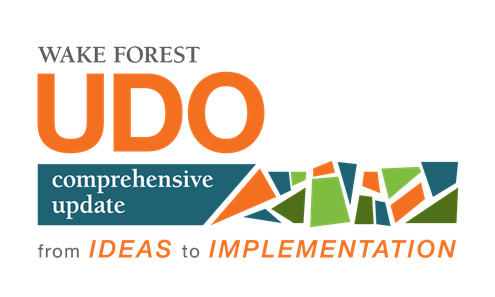Unified Development Ordinance
UDO Update News
Public hearings on the draft UDO were held at the November 19 and December 17 Board of Commissioners meetings.
Session Law 2024-57 (Senate Bill 382) became law on December 11, 2024. One section of this approved state legislation limits local government authority to initiate, enact, or adopt changes to the zoning regulations or zoning map that decrease the uses allowed, decrease the density allowed, or create any type of nonresidential nonconformity, including nonconforming use, lot, structure, improvement, or site element without the written consent of all property owners whose property is subject to the changes.
The Draft UDO includes new zoning districts and regulations to carry out the goals and recommendations of the Town’s plans that make up the Comprehensive Plan. Evaluating all properties with the proposed regulations and obtaining written property owner consent is neither feasible nor realistic.
Due to the broad language within the law, there are still many questions as to the extent of the intent and applicability. As a result, the adoption of the updated UDO, which was initially scheduled for December 17, 2024, is paused to allow for further evaluation of the implications of and possible modifications required by the law.
Updates on the project and schedule will be posted on this page as they become available.
Draft UDO
View the DRAFT UDO. Share your feedback by submitting your comments online.
UDO Overview
 The Wake Forest Unified Development Ordinance (UDO) combines into a single document the Town's zoning, subdivision, land use, grading, storm water management, and historic preservation regulations. It outlines the requirements for all development activity.
The Wake Forest Unified Development Ordinance (UDO) combines into a single document the Town's zoning, subdivision, land use, grading, storm water management, and historic preservation regulations. It outlines the requirements for all development activity.
The UDO was first adopted in 2013, along with the Manual of Specifications, Standards and Design (MSSD). With the update and adoption of several comprehensive plans, including the 2022 Community Plan and 2021 Northeast Community Plan, as well as several other comprehensive plans that are underway, the UDO and MSSD need to be updated to implement the policies and recommendations of the plans. The zoning map, which is a legal document that illustrates the zoning districts where different development rules apply, will also be updated as part of this project.
In addition to reflecting the goals and actions of the comprehensive plans, the UDO needs to maintain compliance with state, federal and case law, which are constantly evolving. Finally, the update will exam best practices and trending topics.
The update process will involve multiple steps and take approximately two years. The updated UDO and MSSD will set the development rules for Wake Forest.

